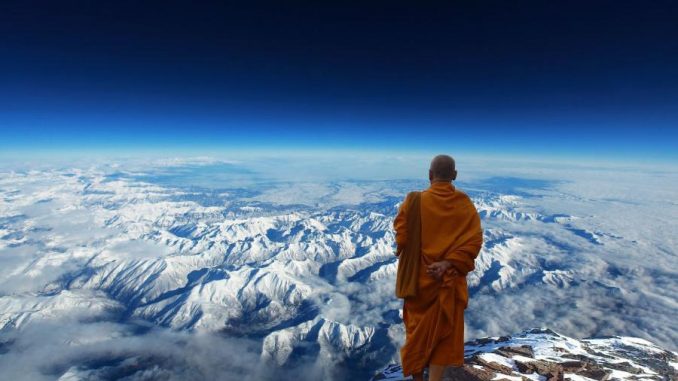
Tibet is an incredible travel location, so much history and mystery. Tashilhunpo Monastery is the seat of the Panchen Lama. The monastery architecture is a grand view to behold. Topping the red building complex are gold roofs that shine under the sunshine. There is a busy cobbled pilgrimage circuit around the monastery.
Located in the Lhasa downtown, Barkhor Street surrounds the Jokhang Temple. It is a commercial centre and a magnet for pilgrims who are performing circumambulation around the temple. The street is full of small shops selling almost everything you would like to take as a souvenir and is a fantastic place to experience local Tibet life. If you are into photography, this one of the best places in Tibet to take traditional life photos. History of Barkhor Street is interesting. After the Jokhang Temple was built, countless pilgrims performed circumambulation around the temple. Gradually, a path formed around the temple which was later built into a street. Today, you can see some of the best examples of Tibet traditional architecture here as the street is full of shops, hotels, restaurants. Although the street is now a busy commercial centre, the pilgrimage is still the biggest activities here. Potala Palace, Jokhang Temple and Barkhor Street can be packed in a single day tour. Still, it is wise to spend some good time here since there are some nice restaurants and good opportunities to buy souvenir here.
Tibet trekking top places : This 8 day trek takes you to the Gyama or Gama Valley which many have claimed is one of the most beautiful mountain valleys in the world. The valley leads up towards the base of Makalu and Everest from the east in a region that few tourists visit. The region is know how its orchids, azaleas and numerous wildflowers as well as forested slopes at the lower elevations. The high point on the trek is Shauwula Pass at 4900m. Since the area is remote and seldom visited trail conditions can be quite be difficult and its important to bring an experienced guide who knows the region well. The Gama trek is much like stepping back in time as you will meet locals from a variety of cultures such as the; Monpa, Lhoba and Sherpa who still maintain the traditional ways.
Yamdrok Lake is one of the three largest sacred lakes in Tibet. It is over 72 km (45 miles) long. The lake is surrounded by many snow-capped mountains and is fed by numerous small streams. The lake does have an outlet stream at its far western end. Around 90km to the west of the lake lies the Tibetan town of Gyantse and Lhasa is a hundred km to the northwest. According to local mythology, Yamdrok Lake is the transformation of a goddess. Yamdrok Lake has a power station that was completed and dedicated in 1996 near the small village of Pai-Ti at the lake western end. This power station is the largest in Tibet. The lake with an area of 621 square kilometers and the unknown depth is fan-shaped, spreading to the South but narrowing up to the North. The mountainous lake has a dozen of islands, the largest of which is about 3,000 square kilometer. The lake freezes up in winter. Like mountains, lakes are considered sacrosanct by the Tibetan people, the principle being that they are the dwelling places of protective deities and therefore invested with special spiritual powers. There are shoals of fish living in Yamdrok Yumtso Lake, which are commercially exploited by local population. From April to October, fish caught from this lake are sold at markets in Lhasa. Besides, the lake’s islands serve as rich pasture land to local herdmen.
As Tibetans, our core values are our rich culture, indigenous tradition and natural environment. We are proud to be one of the first companies in the region to practice Responsible Tourism. In a nutshell, it is tourism “that creates better places for people to live in and better places for people to visit.” We design our tours to pass through smaller Tibetan villages to utilize their services. By partnering with Tibetan owned hotels, family-run guesthouses, restaurants and handicraft shops we can promote local economic growth. Read more details at Tibet Tour.
